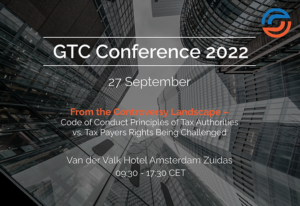| The OECD has now two proposals in process: Pillar One addresses the digital economy and Pillar Two sets forth a global minimum tax system; global anti-base erosion (GloBE) proposal. The proposals are linked herein for reference.Both proposals may have one or more legal entities of a multinational taxed on more than one approach, whether they have a digital business segment, and also dependent on the countries where it is taxed notwithstanding the type of business it operates.This represents a new era of BEPS, and one that demands attention to as the proposals move forward. Pillar One summary· Scope. The approach covers highly digital business models but goes wider – broadly focusing on consumer-facing businesses with further work to be carried out on scope and carve-outs. Extractive industries are assumed to be out of the scope.· New Nexus. For businesses within the scope, it creates a new nexus, not dependent on physical presence but largely based on sales. The new nexus could have thresholds including country specific sales thresholds calibrated to ensure that jurisdictions with smaller economies can also benefit. It would be designed as a new self-standing treaty provision.· New Profit Allocation Rule going beyond the Arm’s Length Principle. It creates a new profit allocation rule applicable to taxpayers within the scope, and irrespective of whether they have an in-country marketing or distribution presence (permanent establishment or separate subsidiary) or sell via unrelated distributors. At the same time, the approach largely retains the current transfer pricing rules based on the arm’s length principle but complements them with formula based solutions in areas where tensions in the current system are the highest.· Increased Tax Certainty delivered via a Three Tier Mechanism. The approach increases tax certainty for taxpayers and tax administrations and consists of a three tier profit allocation mechanism, as follows:· Amount A – a share of deemed residual profit6 allocated to market jurisdictions using a formulaic approach, i.e. the new taxing right· Amount B – a fixed remuneration for baseline marketing and distribution functions that take place in the market jurisdiction; and· Amount C – binding and effective dispute prevention and resolution mechanisms relating to all elements of the proposal, including any additional profit where in-country functions exceed the baseline activity compensated under Amount B. Pillar Two Summary Under Pillar Two, the Members of the Inclusive Framework have agreed to explore an approach that leaves jurisdictions free to determine their own tax system, including whether they have a corporate income tax and where they set their tax rates, but considers the right of other jurisdictions to apply the rules explored further below where income is taxed at an effective rate below a minimum rate. Within this context, and on a without prejudice basis, the members of the Inclusive Framework have agreed a programme of work that contains exploration of an inclusion rule, a switch over rule, an undertaxed payment rule, and a subject to tax rule. They have further agreed to explore, as part of this programme of work, issues related to rule co-ordination, simplification, thresholds, compatibility with international obligations and any other issues that may emerge in the course of the work. Members of the Inclusive Framework agree that any rules developed under this Pillar should not result in taxation where there is no economic profit nor should they result in double taxation. This part sets out the global anti-base erosion (GloBE) proposal which seeks to address remaining BEPS risk of profit shifting to entities subject to no or very low taxation It first provides background including the proposed rationale for the proposal and then summarises the mechanics of the proposed rules together with a summary of the issues that will be explored as part of the programme of work. While the measures set out in the BEPS package have further aligned taxation with value creation and closed gaps in the international tax architecture that allowed for double non-taxation, certain members of the Inclusive Framework consider that these measures do not yet provide a comprehensive solution to the risk that continues to arise from structures that shift profit to entities subject to no or very low taxation. These members are of the view that profit shifting is particularly acute in connection with profits relating to intangibles, prevalent in the digital economy, but also in a broader context; for instance group entities that are financed with equity capital and generate profits, from intra-group financing or similar activities, that are subject to no or low taxes in the jurisdictions where those entities are established. https://www.oecd.org/tax/beps/public-consultation-document-secretariat-proposal-unified-approach-pillar-one.pdfhttps://www.oecd.org/tax/beps/programme-of-work-to-develop-a-consensus-solution-to-the-tax-challenges-arising-from-the-digitalisation-of-the-economy.pdf The OECD has now two proposals in process: Pillar One addresses the digital economy and Pillar Two sets forth a global minimum tax system; global anti-base erosion (GloBE) proposal. The proposals are linked herein for reference. Both proposals may have one or more legal entities of a multinational taxed on more than one approach, whether they have a digital business segment, and also dependent on the countries where it is taxed notwithstanding the type of business it operates.This represents a new era of BEPS, and one that demands attention to as the proposals move forward. Pillar One summary· Scope. The approach covers highly digital business models but goes wider – broadly focusing on consumer-facing businesses with further work to be carried out on scope and carve-outs. Extractive industries are assumed to be out of the scope.· New Nexus. For businesses within the scope, it creates a new nexus, not dependent on physical presence but largely based on sales. The new nexus could have thresholds including country specific sales thresholds calibrated to ensure that jurisdictions with smaller economies can also benefit. It would be designed as a new self-standing treaty provision.· New Profit Allocation Rule going beyond the Arm’s Length Principle. It creates a new profit allocation rule applicable to taxpayers within the scope, and irrespective of whether they have an in-country marketing or distribution presence (permanent establishment or separate subsidiary) or sell via unrelated distributors. At the same time, the approach largely retains the current transfer pricing rules based on the arm’s length principle but complements them with formula based solutions in areas where tensions in the current system are the highest.· Increased Tax Certainty delivered via a Three Tier Mechanism. The approach increases tax certainty for taxpayers and tax administrations and consists of a three tier profit allocation mechanism, as follows:· Amount A – a share of deemed residual profit6 allocated to market jurisdictions using a formulaic approach, i.e. the new taxing right· Amount B – a fixed remuneration for baseline marketing and distribution functions that take place in the market jurisdiction; and· Amount C – binding and effective dispute prevention and resolution mechanisms relating to all elements of the proposal, including any additional profit where in-country functions exceed the baseline activity compensated under Amount B. Pillar Two Summary Under Pillar Two, the Members of the Inclusive Framework have agreed to explore an approach that leaves jurisdictions free to determine their own tax system, including whether they have a corporate income tax and where they set their tax rates, but considers the right of other jurisdictions to apply the rules explored further below where income is taxed at an effective rate below a minimum rate. Within this context, and on a without prejudice basis, the members of the Inclusive Framework have agreed a programme of work that contains exploration of an inclusion rule, a switch over rule, an undertaxed payment rule, and a subject to tax rule. They have further agreed to explore, as part of this programme of work, issues related to rule co-ordination, simplification, thresholds, compatibility with international obligations and any other issues that may emerge in the course of the work. Members of the Inclusive Framework agree that any rules developed under this Pillar should not result in taxation where there is no economic profit nor should they result in double taxation.This part sets out the global anti-base erosion (GloBE) proposal which seeks to address remaining BEPS risk of profit shifting to entities subject to no or very low taxation It first provides background including the proposed rationale for the proposal and then summarises the mechanics of the proposed rules together with a summary of the issues that will be explored as part of the programme of work. While the measures set out in the BEPS package have further aligned taxation with value creation and closed gaps in the international tax architecture that allowed for double non-taxation, certain members of the Inclusive Framework consider that these measures do not yet provide a comprehensive solution to the risk that continues to arise from structures that shift profit to entities subject to no or very low taxation. These members are of the view that profit shifting is particularly acute in connection with profits relating to intangibles, prevalent in the digital economy, but also in a broader context; for instance group entities that are financed with equity capital and generate profits, from intra-group financing or similar activities, that are subject to no or low taxes in the jurisdictions where those entities are established. https://www.oecd.org/tax/beps/public-consultation-document-secretariat-proposal-unified-approach-pillar-one.pdfhttps://www.oecd.org/tax/beps/programme-of-work-to-develop-a-consensus-solution-to-the-tax-challenges-arising-from-the-digitalisation-of-the-economy.pdf |
Source: Keith Brockman





